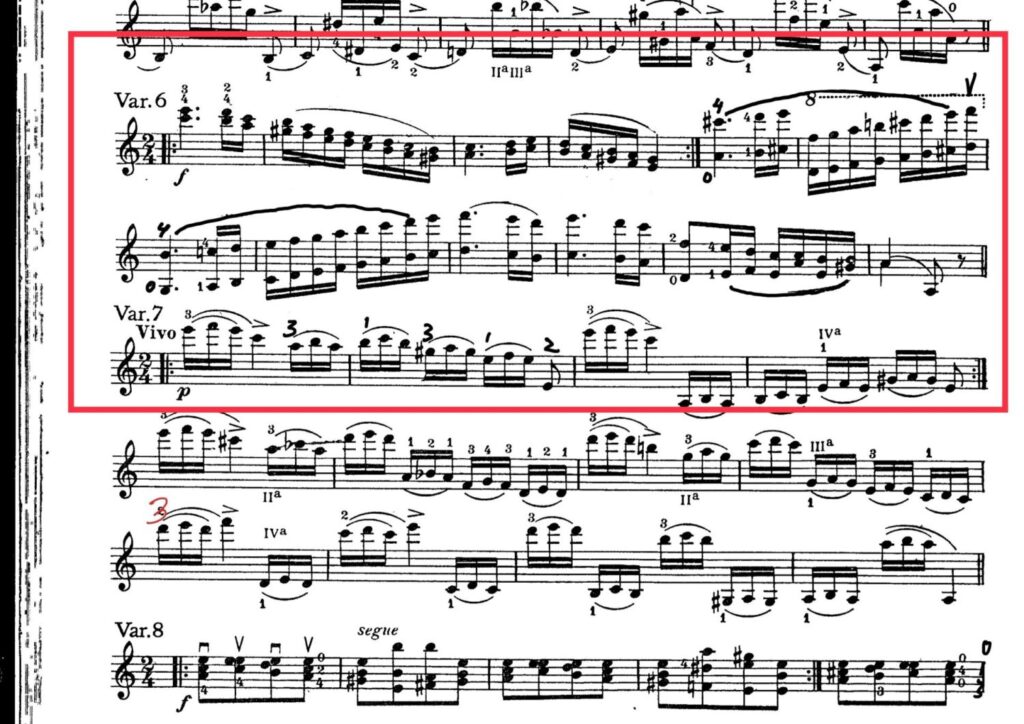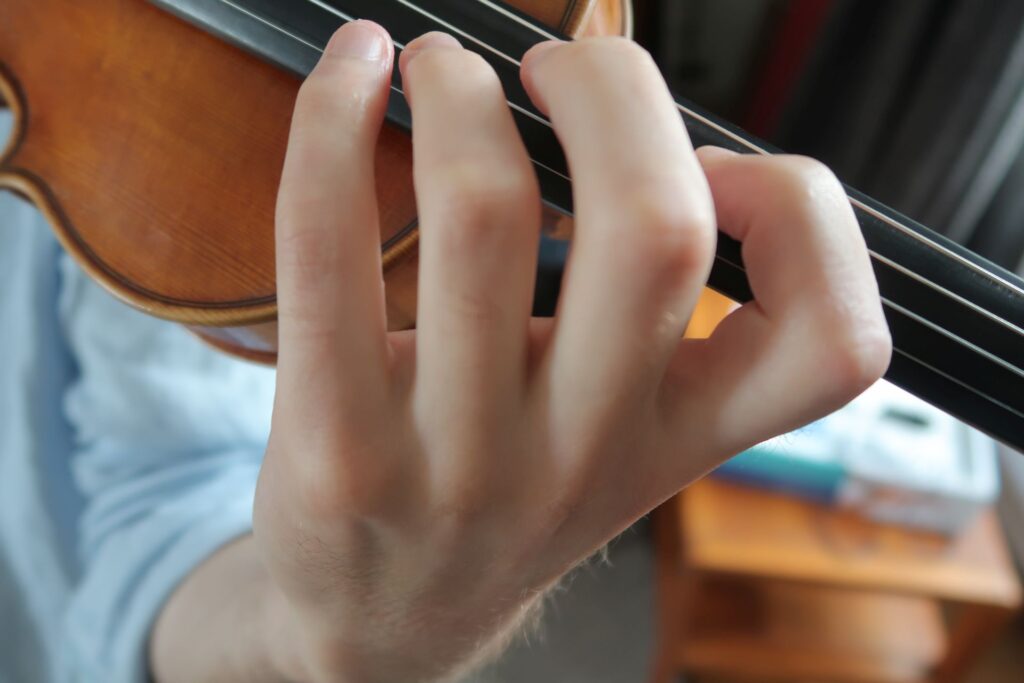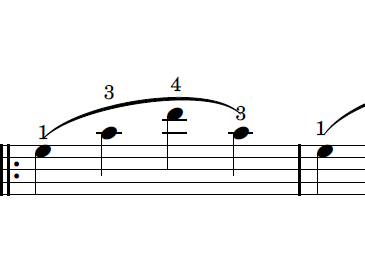In the previous lessons (here, here and here), we practiced expanding our hand frame and discovering the freedom it brings to our playing. Today, it’s all about tenths, utilizing the skills we have acquired from the exercises.
Once you have become comfortable playing an octave double stop with the 1st and 3rd finger, and you can confidently execute a minor and major third with the 3rd and 4th finger while keeping the 1st finger on the string (forming an octave between the 1st and 3rd finger), you are ready to explore the realm of the tenth double stop. Let’s first revisit this exercise from the ‘Exploring Extra Notes with the Extended Hand Frame‘ lesson:

You can see that you play the interval of a sixth between the first and 4th finger. But when you place the 1st finger on the note A on the D-string (on the same spot as on the A-string) the interval between the 1st and 4th finger is a tenth.
To ensure that the minor tenth is in tune, the minor third between the 3rd and 4th finger needs to be relatively large. Conversely, for a well-tuned major tenth, the major third between the 3rd and 4th finger needs to be relatively small. So, to transition from a minor tenth to a major tenth (with the same bottom note) requires only a small adjustment with the 4th finger. Here’s another exercise to practice this:

Do this exercise starting from different notes all across the fingerboard.
To develop a sense of these intervals, it is crucial to continue refining your hand frame skills. Regularly revisiting the exercises from the previous lessons will improve your finger placement, intonation, and overall control of the instrument. By establishing a solid hand frame and maintaining a relaxed and balanced hand position, we pave the way for accurate and beautiful tenths.
As you begin exploring the tenth double stop, start by playing slowly and with deliberate attention to intonation. Focus on achieving a clean and resonant sound, aiming for a harmonious balance between the notes. Gradually increase your speed as you become more comfortable with the finger placement and spacing required for the tenth interval.
Remember, always prioritize a relaxed and natural hand position while practicing. As previously discussed, the 1st finger reaches back a little, so your hand is positioned in favor of the 3rd and 4th finger placement. How much does the 1st finger reach back? That depends on the size of your hands (finger length and palm width). Allow your fingers to drop onto the fingerboard from their base joints, maintaining a gentle curve and avoiding any unnecessary tension. By cultivating a relaxed approach, you will achieve greater accuracy and control over your playing.
Start practicing the suggested exercises daily and explore passages with tenths from the repertoire. 5 minutes of practicing tenths a day for a few months will go a long way!


